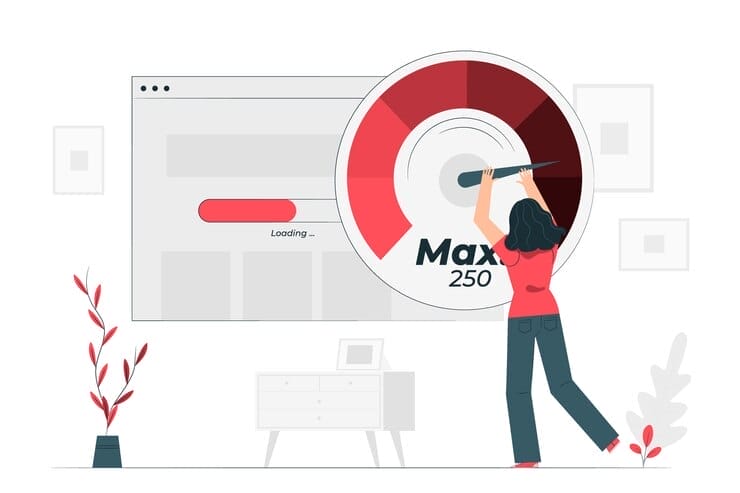Revamp, reboot, and thrive! Discover the power of product repositioning and how to do it effectively with expert strategies and real-life examples.
Recommended For You: Brand Positioning Strategy: Types and How It Works
Table of Contents
You Can Also Listen on Adilo, Spotify, Amazon Music & Castbox.
What is Product Repositioning?

Product Repositioning is taking a well-known product and rebranding it into a newer, better version that can compete with its current competitor or even beat them.
When we talk about product repositioning, we mean taking your existing product and making it better, more effective, or even completely different than what it is today.
Product Repositioning (PR) is a strategy companies use to create new value for their products through rebranding, redesign, and repurposing; this can include changing the flavor, packaging, ingredients used, form factor, and adding features, improving functionality, or even redesigning the product altogether.
Credit: 10 Marketing Branding Authority | Video Hosted On Adilo – An Ad-Free Video Hosting Platform – Try it For Free
PR can help companies expand into new markets, increase sales, improve customer loyalty, and reduce costs. It’s a great way to put your brand out there and make people aware of what they should buy instead of their current product.
Reasons Behind Product Repositioning

I can think of several reasons a company decides to reposition its product. Some companies do this because they are trying to reach a different audience; others choose to rebrand themselves in search of better marketability.
Some companies choose to reposition their products simply because they need to create brand awareness with consumers. And some companies are just looking for ways to make more money (and we know that money makes the world go ’round).
Changing Your Target Audience
If a company discovers that its intended market is no longer the greatest and most lucrative one, it may decide to reposition its products. A product could also be moved with an eye on bringing in new customers and raising its level of product awareness.
Companies may market to new demographics to expand their popularity and boost sales. You may promote a product to a group of previously unattainable people by using effective repositioning.
Handpicked For You:
- Best Guide to Brand Positioning this Year
- Brand Repositioning: Definition, Strategies, & Examples
- 10 Poor Brand Image Examples & poorly Branded Products
Numerous competitors
When there are too many competitors, they can drive down prices and increase their profits. If you were going into the wine industry, you would want to compete against your neighbor who makes wine from grapes grown in his backyard.
You wouldn’t want him selling his product at a higher price than yours just because he has been around longer.
Bad reputation
Product repositioning is often a good idea because it allows your company to return from a bad situation and start over again. A business with a poor reputation might not have much luck getting customers to use its products anymore.
Repositioning the product gives consumers something different to choose from and makes them want to try it. In this case, if the consumer doesn’t like the new product, they would return to the old one and then go through the hassle of finding a replacement.
Declining sales

The top reason for product repositioning by a brand is when its sales are declining or cannot grab the target audience’s attention. Whenever sales are down, it is a must for companies to step back and find out what is wrong.
It is always a good idea to look at your marketing strategy; this includes everything from how you market a product online to where you advertise to even how you present your products. If you are not doing any of these things correctly, you may need to change them. The brand may need to refresh its identity to attract the audience.
A key step in this process is ensuring you build strong brand identity that resonates with your target audience and differentiates your product in a crowded market.
As AI-driven searches become a bigger part of how people find brands, it’s important to think about how your repositioning shows up in those spaces. By doing this, you can expand your reach and stay relevant where your audience is looking the most.
Alterations to the strategy plan
Brand repositioning must be considered whenever a company makes substantial changes to its strategic plan. Consider a company previously focused on selling products but is now planning to offer management services. All of these significant shifts necessitate that the brand repositions correctly.
Improving existing products
Companies that are becoming older will naturally upgrade and modify their products or services. Over time, they begin to expand, introduce new items, improve existing products, and so forth. By making big investments in significant product innovation, they provide a wider audience with a more excellent range of benefits.
Here Are 5 Advantages of Product Repositioning

Market Fit
Repositioning is beneficial because it allows you to determine if your product was designed for the wrong market. If you think about it, some companies spend millions of dollars developing a product that may never get used.
By repositioning your product and testing it in different markets, you can find out where your product fits best. You can adjust based on these observations and find ways to reach new customers.
Focus on Your Customers’ Needs
Another benefit of repositioning is focusing on your customer’s exact problem. Because you know what your customers need, you can build products specifically for them, creating products that solve their problems efficiently.
Product repositioning allows companies to take advantage of their current situation and offer consumers something different – but still related to what customers love about their existing brand. So, it’s like bringing back your old favorite food item, only better!
Better business model
If a company has already created a successful brand, this can work as a marketing tool if you leverage that name into a new product line. Your target audience may not have heard of your product yet, but they know who you are
By using your existing brand, customers will understand what you do and trust your quality. If they find your product useful, that’s great, but they are also more likely to buy from you again if they like your brand.
Increased market share
Companies will sometimes use their existing products to improve sales in other areas. Products like Nutiva’s hemp oil have been used to enhance the nutritional value of meals, leading to better health through diet.
Other brands have even been able to create supplements based on their original formulas. You can add something new to extend its reach if you have a popular product.
Improved customer experience
Consumers who purchase from your company expect a certain level of quality. Using a known brand name helps them feel confident in what they’re buying, and having confidence leads to repeat purchases.
Consumers are also more eager to try out new products than they would with a completely unknown brand. So if you have a well-known brand, they might be more interested in trying your new product.
Product Repositioning Disadvantages
Cost
Product repositioning requires significant research and development investments (R&D) and marketing. Because of this, product repositioning can be costly. However, the payoff is huge if you can successfully reposition your product.
In fact, according to a study conducted by the Harvard Business Review, companies that repositioned their products were able to increase sales by 1,000%!
Time
The biggest challenge with product repositioning is time. It would help if you spent a lot of time researching what consumers want and how they think about your product.
This means you must understand the consumer’s needs and wants before effectively repositioning your product. If you don’t do this, you risk wasting valuable resources and money.
Marketability
A significant problem with product repositioning isn’t just the cost; it’s also marketability. You won’t be successful if your target audience doesn’t know who you are or what you offer.
It would help if you educated your target audience on your brand and its benefits to solve this issue. Once they understand your brand and what it offers, they will be much more likely to buy from you.
Your target audience has already bought into your brand
If you try to reposition your product without understanding what your existing customer base thinks about your brand, you will face problems.
If your target audience already believes they like your product, you are going against their expectations. They might feel confused or disappointed when they find out that you are changing something about your product.
The problem with this approach is that the original target market may not be interested in the product’s new version. In addition, the company may lose the brand recognition built over time.
Steps to Reposition Your Product
Step 1: Understand your business model

An excellent place to start is understanding what your business model is. What are your products? How do they work? Who exactly is your customer? Why does your customer buy from you? These questions can help guide you through the rest of the steps.
Step 2: Define your product

Clarity is vital when describing your product or service. Your sales and marketing activities will be more successful if you clearly define what you do. By describing what you sell, you will boost your ability to stand out from the competition and increase sales.
Step 3: Identify your target market

If you’re like me, you probably thought your target audience was others who use the same product. But did you ever pause to consider who could be interested in purchasing your offering? What about those who could be interested in what your product does but don’t even like related products?
These are the types of people that you may not have considered before, but now that you’re thinking about repositioning your product, you should take the time to research these types of customers.
Once you know what kind of product you are going to run, you should identify who your target audience is. You are attempting to attract your target market with your business. They are people who might buy your products.
You may think about age groups, gender, income levels, location, interests, hobbies, or any other information that would help you identify your target audience. Once you know your audience, you create content that appeals to them.
The best way to learn about your customer base is through market analysis. By digging online and talking with current clients, you could find what type of people you’re selling to and how they feel about your product.
This information will help you determine whether your product fits your target audience and whether or not you should continue down that path.
Step 4: Create a vision statement

Your vision statement should describe what your company will look like; this can be anything from a product line, brand image, or slogan.
Your vision statement should describe what you want your company’s future to look like.
Step 5: Define your business goals

A marketing strategy should include what you want to achieve and how you will do it. A marketing strategy is not just about coming up with ideas but having a clear idea of what you want to accomplish.
You need to know your business goals before you can come up with a good marketing strategy. Write down your goals and objectives, then think about ways that you can implement them.
It would help if you established clear goals before beginning your marketing campaign. These goals could include sales, profit, brand awareness, traffic generation, customer satisfaction, etc.
If you do not set goals, you cannot measure whether or not your efforts were successful. Make sure that you clearly define these goals before starting your campaign.
Step 6: Create a Marketing strategy plan

Now that you know your customers and business goals, you need to create a plan for reaching them. Do you want to use direct mailers? Or would you instead try social media marketing? There are many ways to get in touch with your potential customers.
You must develop a clear marketing plan outlining your desired method of reaching your target market and product promotion strategy.
Step 7: Set up a budget

You need to set up a budget based on projected sales to help determine where the money goes. If you don’t have a budget, you may spend too much on advertising.
Make sure you factor in things like printing costs, website hosting fees, and other expenses related to running a successful business.
Step 8: Create your Sales Campaign plan

The first step in creating a marketing strategy plan is understanding what kind of business you want to run. This can be done by looking at your product type and how much money you have to invest.
There are many various ways to advertise a business. Still, some include conventional advertising techniques like radio, television, newspapers, billboards, etc., social media marketing, affiliate marketing, direct mailers, and e-mail campaigns. It would help if you chose whether to employ these techniques or something else entirely.
Now that you have a strong foundation, you’re ready to launch your sales campaign! There are many ways to market your business; however, if you want to start small, consider using Facebook ads and Google Ads.
Difference Between Product Positioning & Repositioning
Here are three key differences between product positioning and product repositioning
| Product Positioning | Product Repositioning |
| A company’s primary business focus is to sell its products or services to customers who are already looking for them; this is done through advertising, branding, and other marketing efforts. | A company’s business focuses on developing new markets for existing products or services; this is done through research and development (R&D), market analysis, and other marketing strategies. |
| Product positioning is a strategy that focuses on selling products directly to consumers. You can do this through direct sales (e.g., Amazon) or indirect sales (e.g., retail stores). In this case, the company does not change its existing business model but sells the same product under different brands. | On the other hand, product repositioning involves changing how the company markets its products to appeal to a broader audience. For example, if a company makes personal care products, they may decide to market their products as a health supplement. As the name suggests, product repositioning changes the direction of the company’s products rather than just adding new ones. |
| Product positioning is about creating value for your customers through your products. | Product repositioning is about finding new ways to create value for your customers through existing products. |
How Adilo Can Help Reposition Your Product
Adilo could be your gateway to putting your brand ahead of your competitors.
This ad-free, unlimited hosting website comes with powerful features that make it suitable for businesses seeking to reposition their brands.
Some of my favorite features include:
- Video Recording: Adilo video recording is a key to improving your brand position. It lets you record 4K quality videos seamlessly.
- Video in Email: Embedding video into your emails makes your emails stand out. Adilo makes this a breeze. It lets you seamlessly leverage video email marketing, which could be a game changer for boosting engagement and sales.
- Video Split Testing: With Adilo, you can experiment with different versions of your videos to learn which performs better. This way, you can always put your best feet forward.
- Advanced Video Security: Adilo’s advanced suite of video security and anti-piracy features put you in full control your video content, protecting your intellectual property from content thieves.
Learning how to put Adilo to good use can help you leverage storytelling to reposition your brand to influence customer perceptions, drive engagement, and beat the competition.
CLICK HERE TO GET A FREE ADILO ACCOUNT
Product Repositioning Examples
Here are some brands who have repositioned their products:
Gucci

Gucci was regarded as a symbol of luxury and class in the early 2010s. Everyone at the time wanted to own a pair of Gucci belts or handbags, but as time went on, the era of the luxury brand began to fade as its audience was aging.
Marco Bizarre, who preceded the CEO and Creative Director Alessandro Michele, began thinking of ways to appeal to the younger generation.
To sustain its brand, Gucci makes steps to emphasize a forward-thinking mindset to maintain their brand, such as:
Gucci focused on using social media platforms like Instagram to communicate with younger generations; they updated their logo to reflect a modern aesthetic.
Gucci has remained relevant in the fashion business thanks to these innovations, which have helped the company enter another profitable age. They continue to be a top destination for fashion enthusiasts and other influencers.
Taco Bell

“Made to order” burritos, tacos, quesadillas, and other Mexican-inspired delicacies were Taco Bell’s signature products for many years. Taco Bell’s critical competitive edge is its products are inexpensive, practical, and available at night.
After a comprehensive study into claims of an E. coli outbreak in 2006, it was found that lettuce, an ingredient in 70% of Taco Bell meals, is probably to blame for the attack, affecting scores of Americans. Between 2011 and 2012, Tacos experienced a few more mishaps that hurt the company’s reputation.
To proceed, they decided to revisit their marketing strategies and devise a solution to rebrand their product.
By adding fresh items to its menus, such as Doritos Locos Tacos and a new Breakfast Menu, Taco developed a new product. They also decided to adopt trends like Happier Hour and to use social media platforms to communicate and reach a larger audience.
Starbucks

On Seattle’s waterfront, the first Starbucks coffee store debuted in 1971. In today’s large urban cities, there seems to be a Starbucks on every corner. The company has gained widespread recognition, showing up on the shelves of our grocery stores and impacting how many of us organize our mornings.
However, by 2008, the company’s fast growth has made it challenging to scale the service level and the number of its branches. The breaking point came with the Great Recession.
As American customers struggled with their tighter finances, more than 900 Starbucks locations shuttered. Instead, customers opted for more affordable options like McDonald’s.
Starbucks launched “coffee value and values,” the most vital advertising campaign in the company’s history, to reaffirm the quality of its products and convince customers that they were worth the higher price.
The advertising campaign proved effective as people began to patronize their product. When the company’s revenue reached a record $16 billion in 2014, it was again profitable.
McDonald’s

During the early stages, the well-known brand “McDonald’s “marketed itself as a relatively affordable and family-friendly restaurant. People threw a bunch of criticism was thrown at the brand due to its menu’s adverse effects on the human body.
Customers started turning to other options on the market as the brand lost its credibility. Then McDonald’s came up with a repositioning plan like this: Create Your Taste. This new initiative allows consumers to build their hamburgers using digital kiosks that the company installed in its locations as part of its repositioning plan.
Handpicked For You:
- Best Guide to Brand Positioning this Year
- Brand Repositioning: Definition, Strategies, & Examples
- 10 Poor Brand Image Examples & poorly Branded Products
Final Thoughts On Product Repositioning
Product repositioning is an excellent strategy for looking at new marketing plans. Many companies do not think outside the box and market their product because it already exists. This is how you keep competition out of the game.
Many people follow trends and buy products they have been hyped into thinking they want. Repositioning works because it changes this cycle. The new product created can make an older one seem obsolete. However, repositioning a product is much more complex than first imagined.
READ ALSO: Inbound and Outbound Marketing Tools and Software for Marketers
You love this Article, right? Get more Updates via Adilo’s Twitter Page
http://www.aaaa.org/taco-bell%EF%B8%8F-confirms-a-saucy-return-to-the-super-bowl-after-5-year-hiatus/








